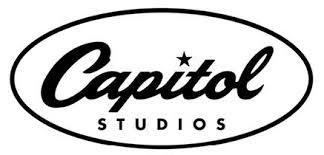Website www.capitolstudios.com | Founded 1956 | |
 | ||
Area served | ||
Bastille warmth live at capitol studios
Capitol Studios is a complex of recording studios located in the Capitol Records Tower in Los Angeles, California that has been in operation since 1956, as the American record label Capitol Records' main studio. The facility is owned by the Capitol Music Group, whose parent company is Universal Music Group (UMG). Paula Salvatore has been the studio manager for over 20 years. An additional studio by Capitol Records was built in New York City. Many of Capitol's most famous acts such as Frank Sinatra, Nat King Cole, and the Beach Boys have recorded at Capitol Studios.
Contents
- Bastille warmth live at capitol studios
- Bastille good grief live at capitol studios
- Overview
- Echo chambers
- References
Bastille good grief live at capitol studios
Overview
The ground floor, the only rectangular part of the building, is a separate structure that surrounds the tower and was joined to it after the tower was completed. It houses the Recording Department offices, two mastering rooms, three recording studios which were designed by Vincent Van Huff, Jeff Cooper, and Jack Edwards, plus six production/edit rooms. The studio A and studio B can be used together to make space for 75 musicians to record orchestral and soundtrack music.
Studio A, 60' x 45' x 25' in size, was used mostly for acoustic recordings especially of classical artists. In 1979 that studio was equipped with digital recording equipment, consisting of a Neve 24-channel table and a JVC BP-90 recorder, and later with a Sony PCM 1610. Studio B had a 48-channel table and was used mostly for rock and popular music. The smaller Studio C was typically used as a mixing room.
To prevent the hum of fluorescent lighting, the fixtures' ballasts were mounted outside the studios. The heating and air conditioning system used decoupled ducts, sound traps and soundproofed vents. The exterior walls are 10-inch-thick concrete. A one-inch air gap separates the outer wall from the studios' inner wall, which in turn stands on a floor that floats on a rubber-tiled, 3-inch concrete slab. This upper slab floats on a layer of cork, which rests on the 6-inch concrete foundation slab. The studios' interior walls were built with shutter-like baffles. One side is birch wood, which creates a hard sound, and the other is fiberglass, which has a softer sound. Ceilings are suspended beneath thick rock-wool soundproof insulation.
Echo chambers
The Capitol Studios feature unique echo chambers. They are subterranean concrete bunkers built 30 feet underground. The sound isolation and acoustic properties allow recording engineers to enhance tracks with rich reverberation.
The echo chambers were designed with trapezoidal rooms by recording artist and sound expert Les Paul. They have 10-inch-thick concrete walls and foot-thick concrete ceilings. With speakers on one side and microphones on the other, they can provide reverberation lasting up to 5 seconds. Sound engineers "use them like an artist's palette," as one Capitol worker put it. Sound from the studios is sent to speakers in the echo chambers, and picked up by the microphones. The amount of reverberation is controlled at the sound mixing console.
Recording activity at the studios could become hampered by the proposed construction of a nearby condominium building and underground parking lot, which would involve heavy equipment working within 18 feet of the underground chambers.
